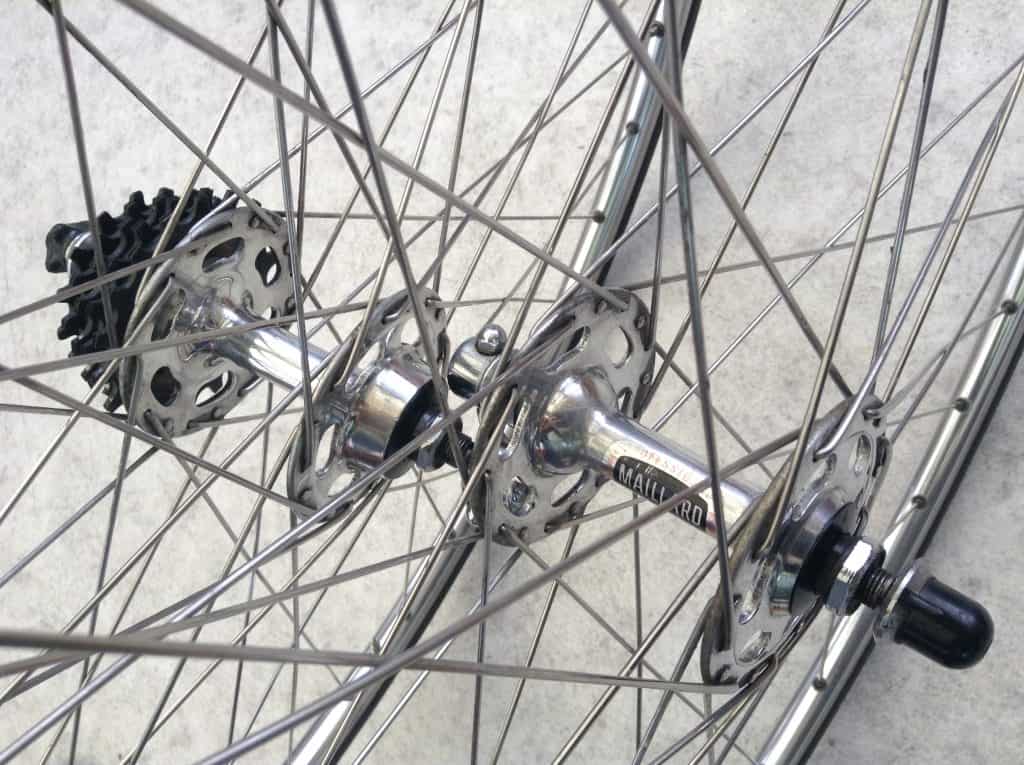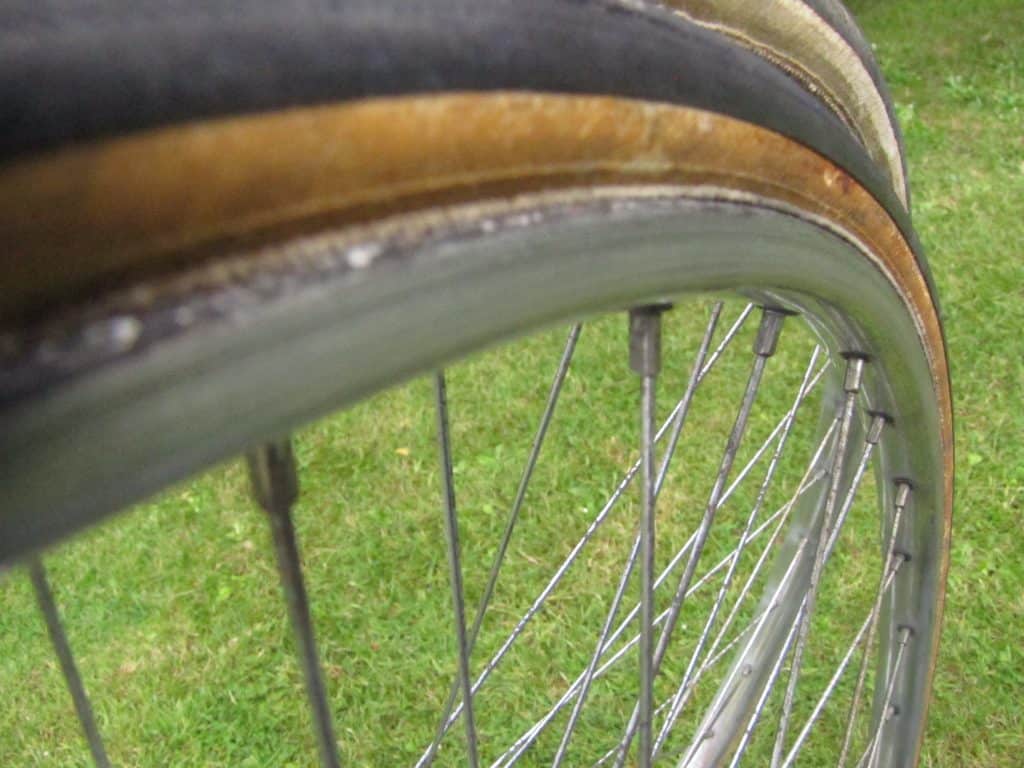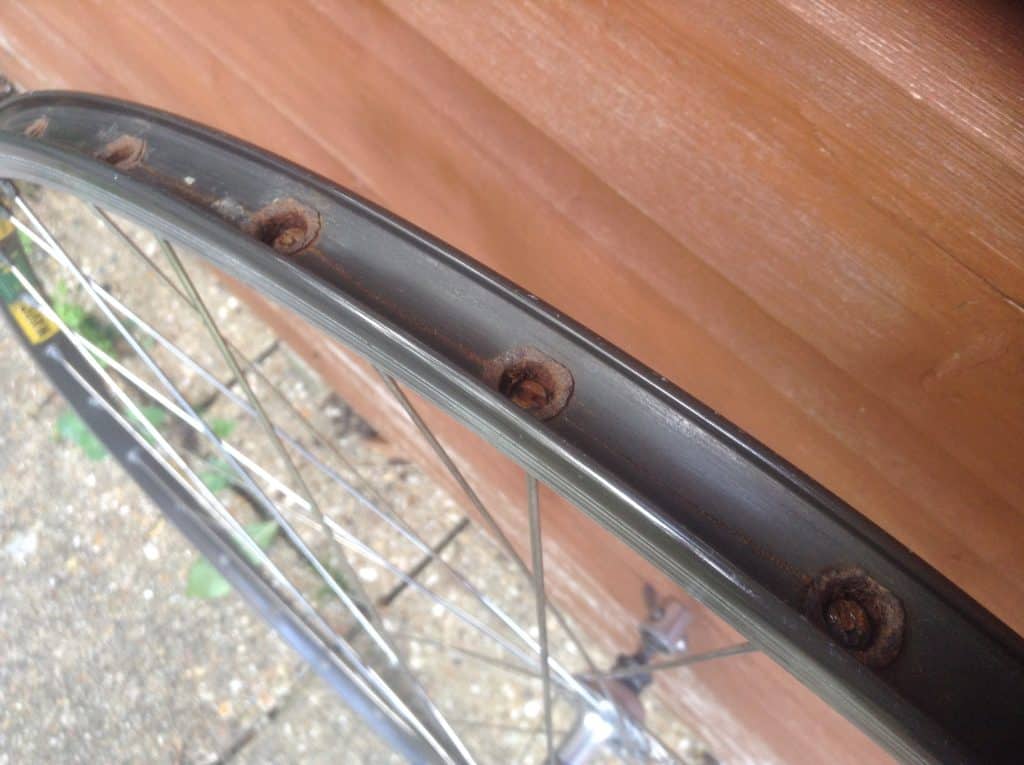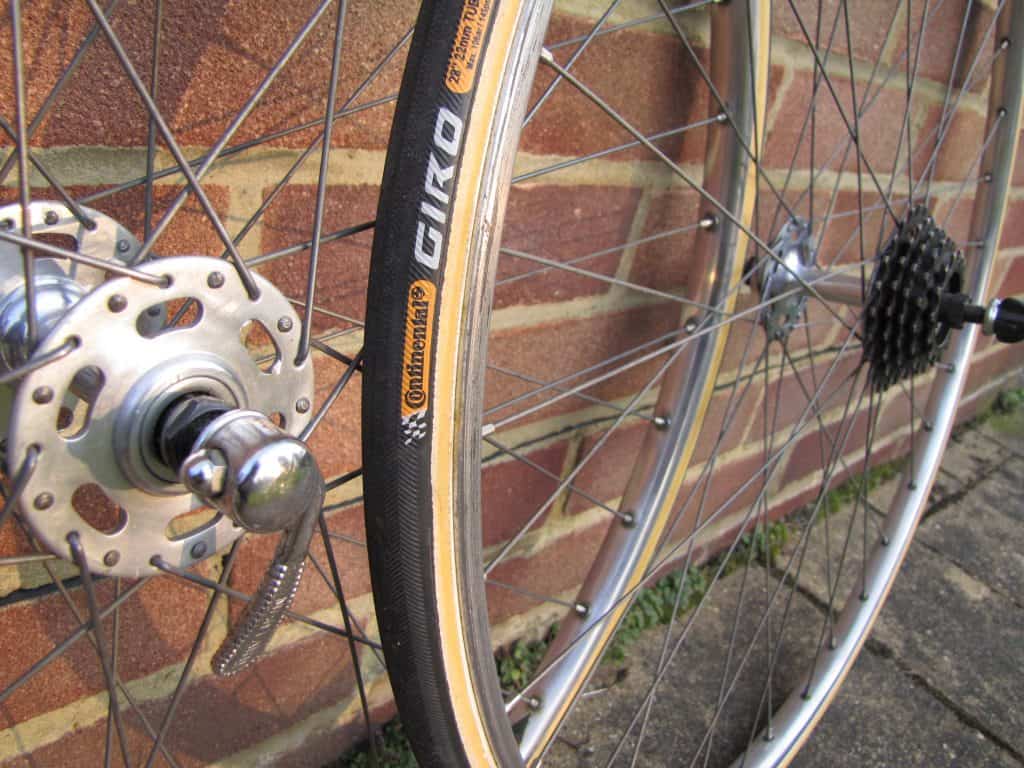Weight Weenies
A beautiful wheelset completes a bike. But let’s face it, nowadays the cost of a high quality wheelset can be astronomical. The desire, the obsession, for such spectacularly lightweight wheels is obvious when visiting bike shops selling Dura Ace, Zipp and Kysriums. I don’t think riders of vintage bikes obsess over the weight of their wheels or demand such high performance from their vintage Mavics or Fiamme rims, but nevertheless, choosing a great wheelset for your vintage bike is a really important part of the riding experience and aesthetic appeal of your build. I’ve seen so many good frames ruined by a lack of attention to the wheels, which are often in poor condition and in need of repair.
Functionality Over Form
Clinchers are so much more practical and cheaper to maintain than tubulars. No wonder their introduction changed the bicycle tyre market with the introduction of 700c clinchers back in the mid 1970’s. Who wants to get glue all over their hands and do the messy job of gluing an expensive tyre onto a rim? Don’t forget the prep work of having to clean the rim first, and getting it right first time. Clinchers are so much more functional: pry off your tyre, replace tube, remount tyre, as often as your tyre can handle. Riders are also less inclined to change a tubular tyre, and that’s why many vintage bikes are sold with tubulars hanging off, decomposing, and left rotting on the wheels. I’d say four out of five vintage bikes with tubs are sold with their tubulars needing replacement. Compare that with clincher wheelsets: most are roadworthy or just need a simple inner tube replacement. You ca expect to pay more for a vintage bike with a good working set of clinchers.
Quality and Performance
It’s clear that clinchers easily win the choice for functionality over tubulars. Riding a vintage bike, however, is surely not all about functionality. If you love your vintage bike, it must also have to do with the spirit of the steel era, otherwise, why not just buy a cheap modern bike made in China? Why do some many people spend tons of money on Campagnolo Nuovo Record derailleurs, when they don’t shift as well as some of their rivals of the day? It’s not about functionality, its also about style and quality, lightness and design. There is no doubt in my mind that tubular wheels ride better than clinchers. They are lighter, are made of a superior quality, provide more comfort and feel on the road. In fact, I think they even look better.
Extra Cost, Extra Quality
Compare these two wheel sets from 1978:
Maillard Professional 700 low flange hubs with stainless steel spokes, laced to Mavic Module C rims. Weight: 3458 grams
to:
Normandy high flange hubs laced with stainless steel spokes to to Mavic Module C rims: Weight: 2754 grams.
That’s a weight difference of around 700 grams, so the clincher wheelset is around ¼ heavier than its tubular counterpart. Typically, the tubular tyres are on their ways out, with just a few hundred miles left in them. Nevertheless, the weight difference is quite significant, and it doesn’t take a weight weenie to tell you that the lighter wheelset will make a difference to your bike’s performance. Not only that, but the tubular set rides better. So maybe it is worth getting messy once in a while with that glue, for the sake of having better rims and owning bike that captures the spirit of its steel era.







Recent Comments